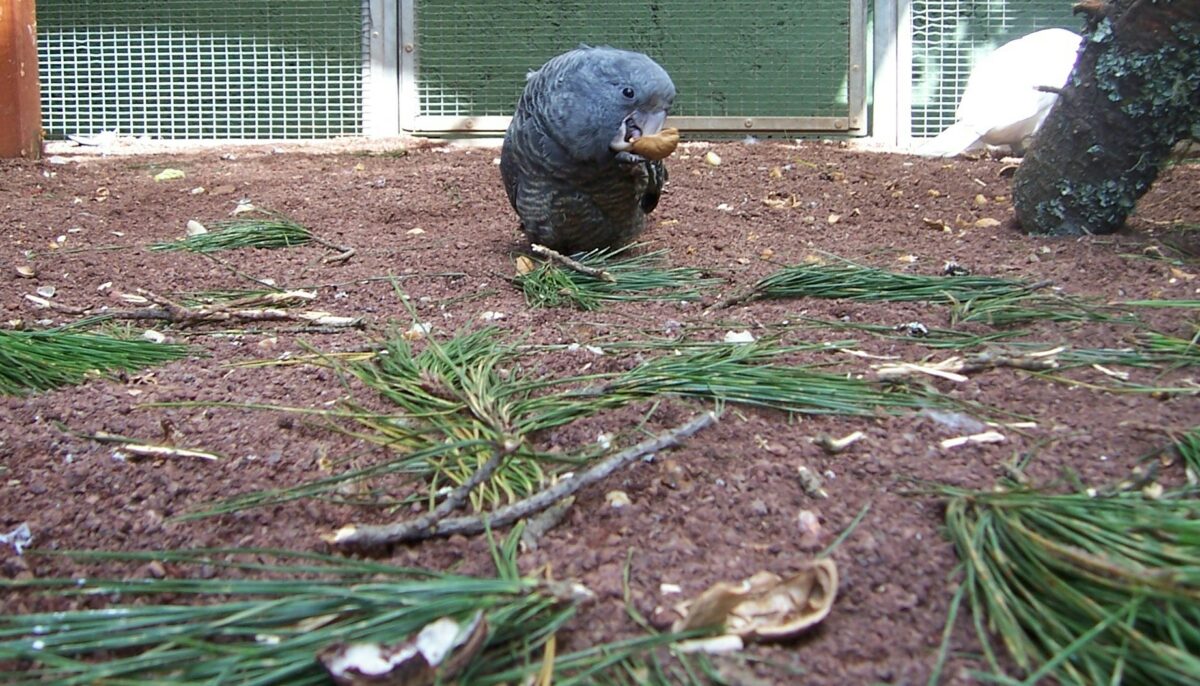Foraging is often looked at as a fun way to provide enrichment for your parrot. I am all about parrots having fun, but I am also very interested in teaching my parrots to be well-behaved. Believe it or not, foraging activities can also be used to help influence your parrot’s behavior for the better. And that contributes to a Fear Free Happy Home for both of you. Here are four situations in which foraging activities can be used to help create desired behavior and prevent undesired behavior.
1. Use foraging to make going back into a cage or enclosure reinforcing.
If your parrot enjoys your company, he may not want to go back into his cage. Some parrots view spending time with preferred people as highly desirable. To address this, make sure desired outcomes occur inside the cage as well as outside. Giving lots of attention while your bird is inside the cage is usually not realistic. What you can do is offer something else as a desired consequence. Foraging toys or activities that are delivered right when your parrot goes back in the cage are a great way to increase the value of going home. This time-consuming activity also helps keep your bird focused on foraging instead of wondering where his favorite person went.
2. Use foraging to teach your parrot to enjoy spending time on a play stand.
Many companion parrot owners want their birds to spend time on play stands. Play stands are often positioned to ensure lots of socialization and enrichment. However, play stands can quickly lose their appeal for parrots when everything (view, toys, diet, etc.) stays the same. Providing foraging activities can make a play stand interesting again. The novelty of having to search for and extract food items from foraging toys can increase the likelihood that spending more time on the play stand will be the more reinforcing activity rather than roaming around the house. Regularly mix up where food is placed and how your bird will access it to keep play stands more engaging.
3. Use foraging to prevent your parrot from vocalizing for attention.
Many parrots learn to vocalize loudly when a preferred person leaves the room. A great way to prevent this is to engage your bird in other acceptable activities prior to leaving the room. This is a great time to offer foraging toys and activities. When your bird is eagerly foraging, you can slip out of the room and let your bird enjoy searching for his favorite foods.
4. Use foraging as an alternative to feather damaging behavior.
Feather-damaging behavior is a challenge for many parrot owners. If your bird has this problem, be sure to visit a veterinarian with experience with this condition to get an accurate diagnosis and treatment plan. In the meantime, you can work on redirecting your bird’s behavior from feather picking to foraging. If you know there are certain times when your bird is prone to pick, plan on providing foraging activities just before that time. For example, some birds seem to pick early in the morning. For these birds, place foraging toys in the cage just as your bird is going to roost for the night. When the sun rises, your bird may choose to engage with the foraging toys rather than destroy feathers.
Foraging is more than fun for your parrot. It is a great tool for managing behavior. Get creative with ways you can use foraging to influence your bird’s behavior. The result is a well-behaved companion parrot.
This article was reviewed/edited by board-certified veterinary behaviorist Dr. Kenneth Martin and/or veterinary technician specialist in behavior Debbie Martin, LVT.








